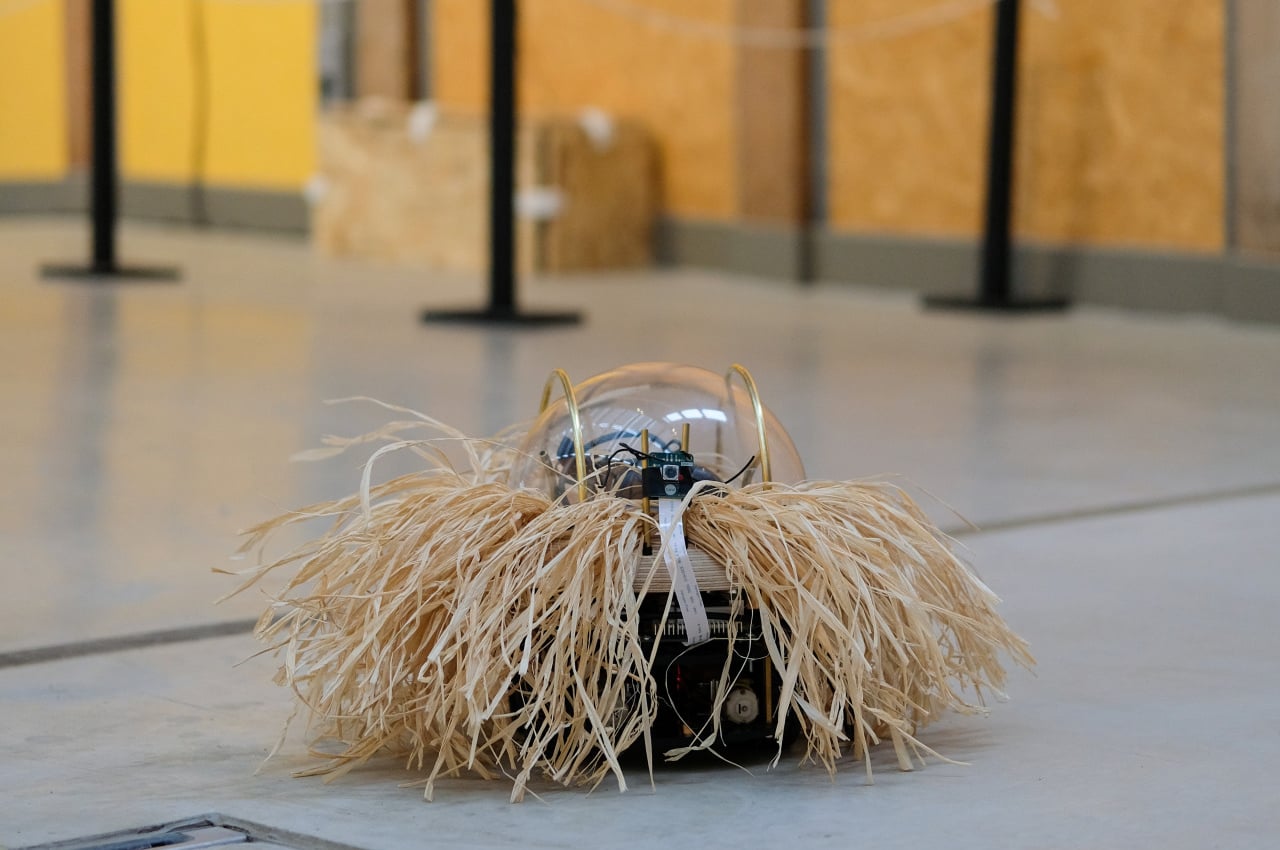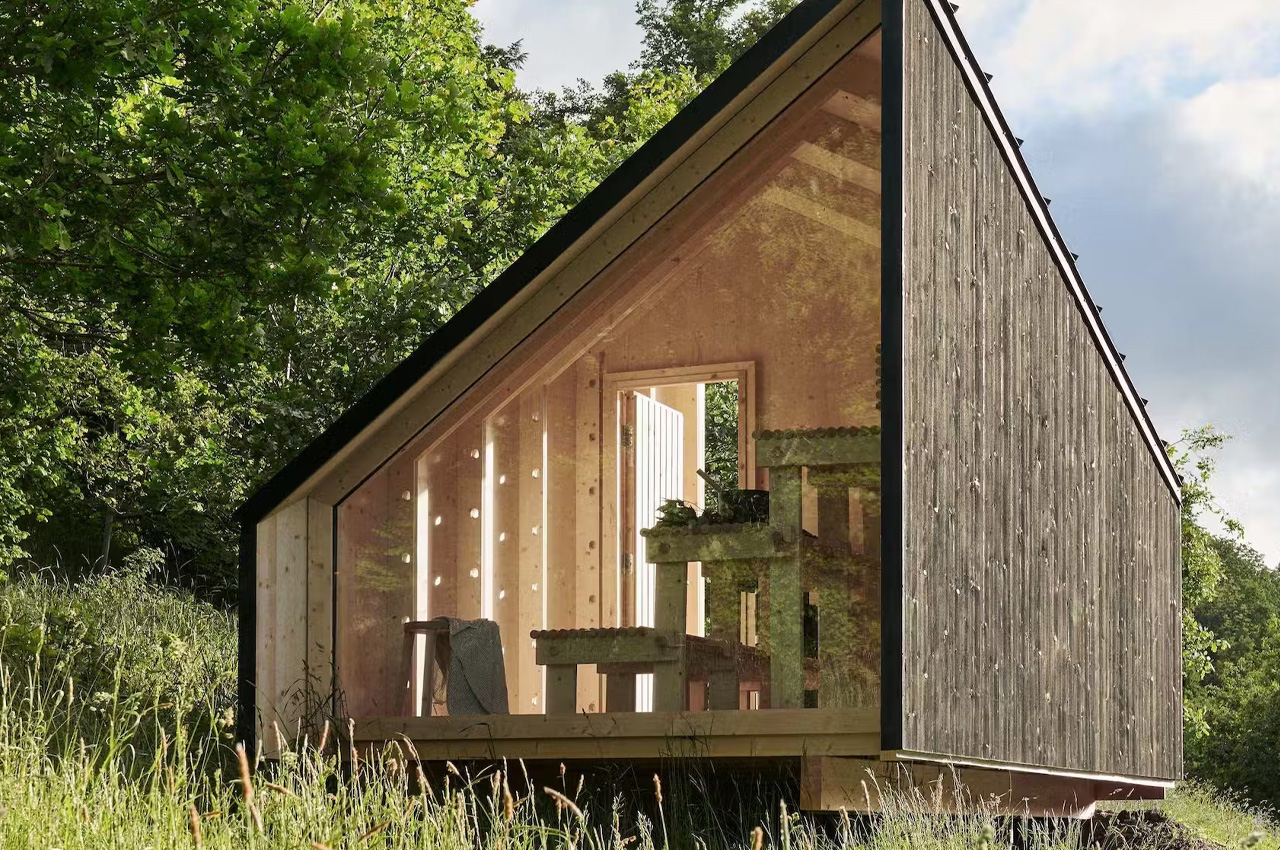#Top 10 3D-printed designs that are the best of sustainable product design
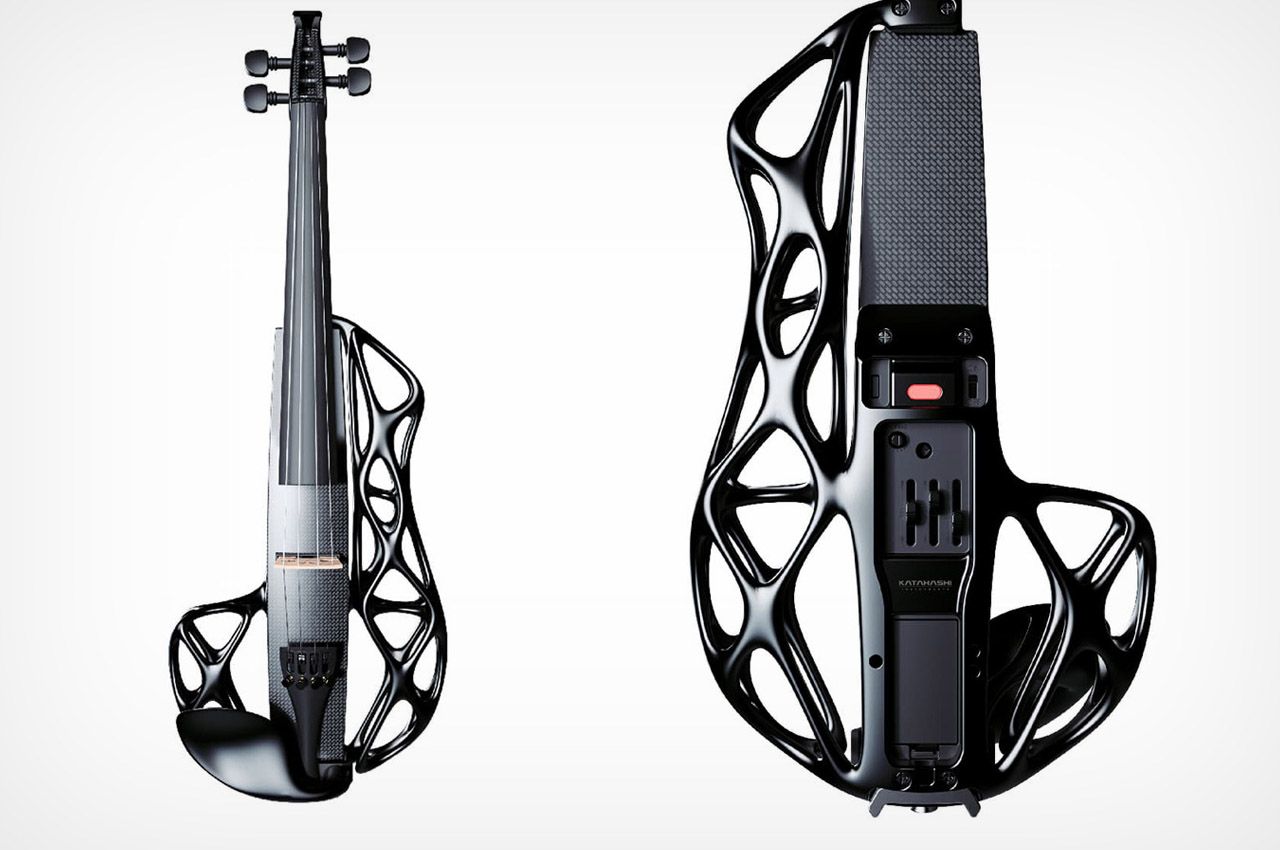
Table of Contents
“Top 10 3D-printed designs that are the best of sustainable product design”

3D Printing is gaining more momentum and popularity than ever! Designers and architects all over the world are now adopting 3D Printing for the creation of almost all types of products and structures. It’s a technique that is being widely utilized in product design, owing to its simple and innovative nature. But designers aren’t employing 3D printing only to create basic models, they’re utilizing this technique in mind-blowing ways as well! From a stunning electric guitar with a 3D-printed skeletal body to a pair of 3D-printed shoes that’ll make you feel like Bigfoot – the scope of this dependable technique is unlimited! Dive into this collection of humble yet groundbreaking 3D-printed designs.
1. The Karen Ultralight
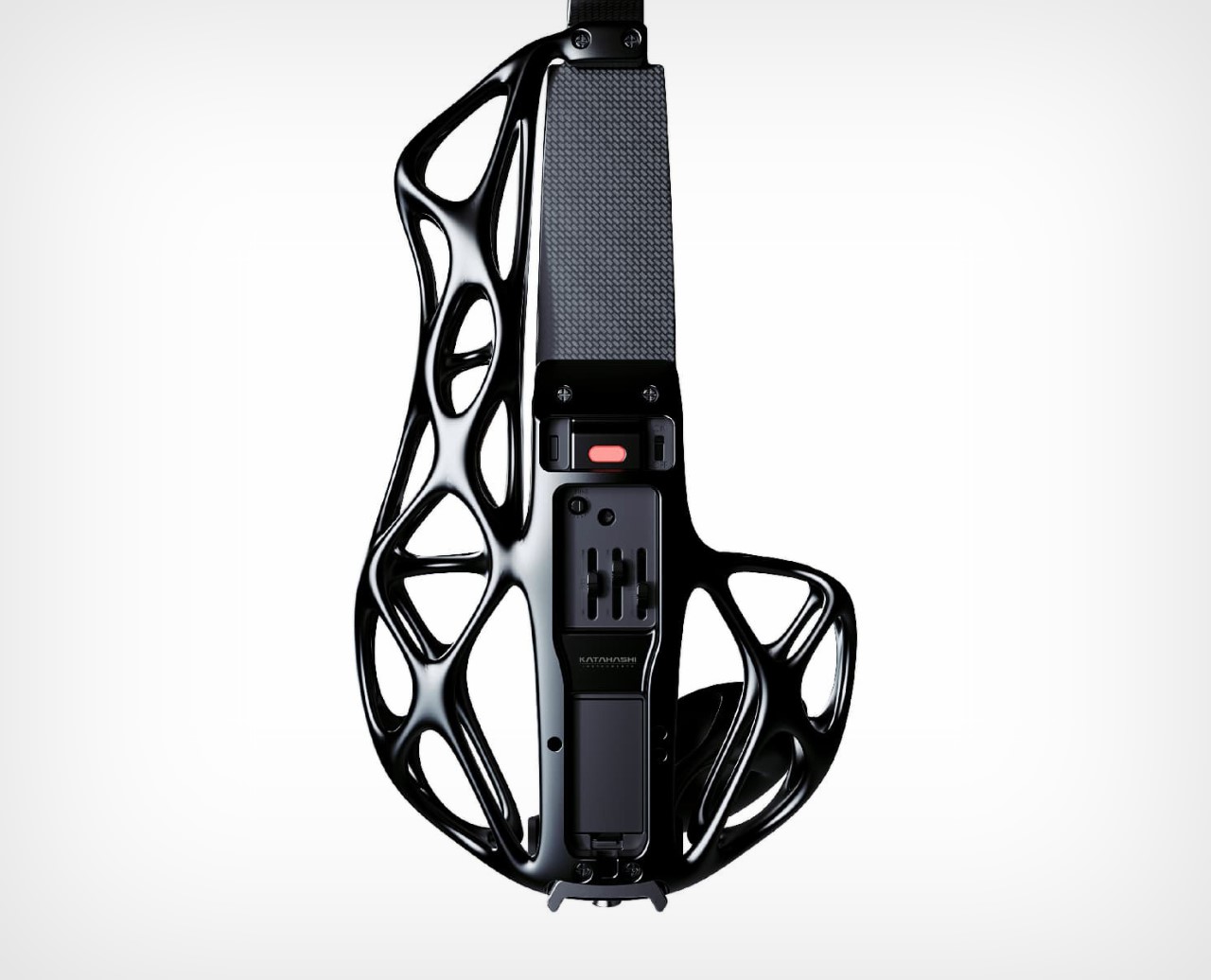
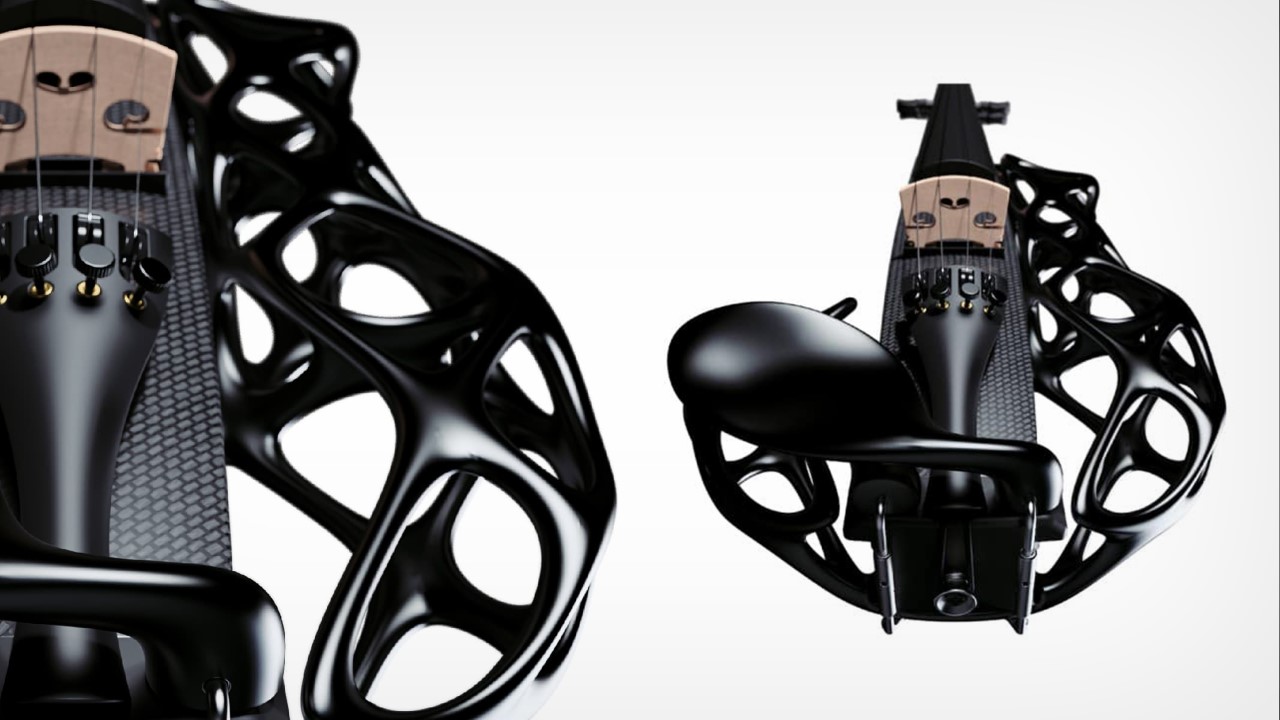
Envisioned by Anima Design for Katahashi Instruments the Karen Ultralight is a dynamic electric violin that ditches conventional wooden acoustic chambers for something more eye-catching. The violin comes with a relatively hollow body made through generative design, which still provides strength with minimal use of material.
Why is it noteworthy?
The 3D printed generative frame sits on a carbon fiber body, with a birchwood fingerboard for an elevated yet familiar playing experience. Working just like an electric guitar, the Karen Ultralight has a 1/4-inch jack output, but even sports an internal 9V battery and a headphone jack so you can ‘silently’ play music directly into your headphones without disturbing the neighbors!
What we like
- Uses a popular design technique called generative design
- Can easily be mass-manufactured, or even printed in left-handed variants
What we dislike
- No complaints!
2. The Cryptide Sneaker
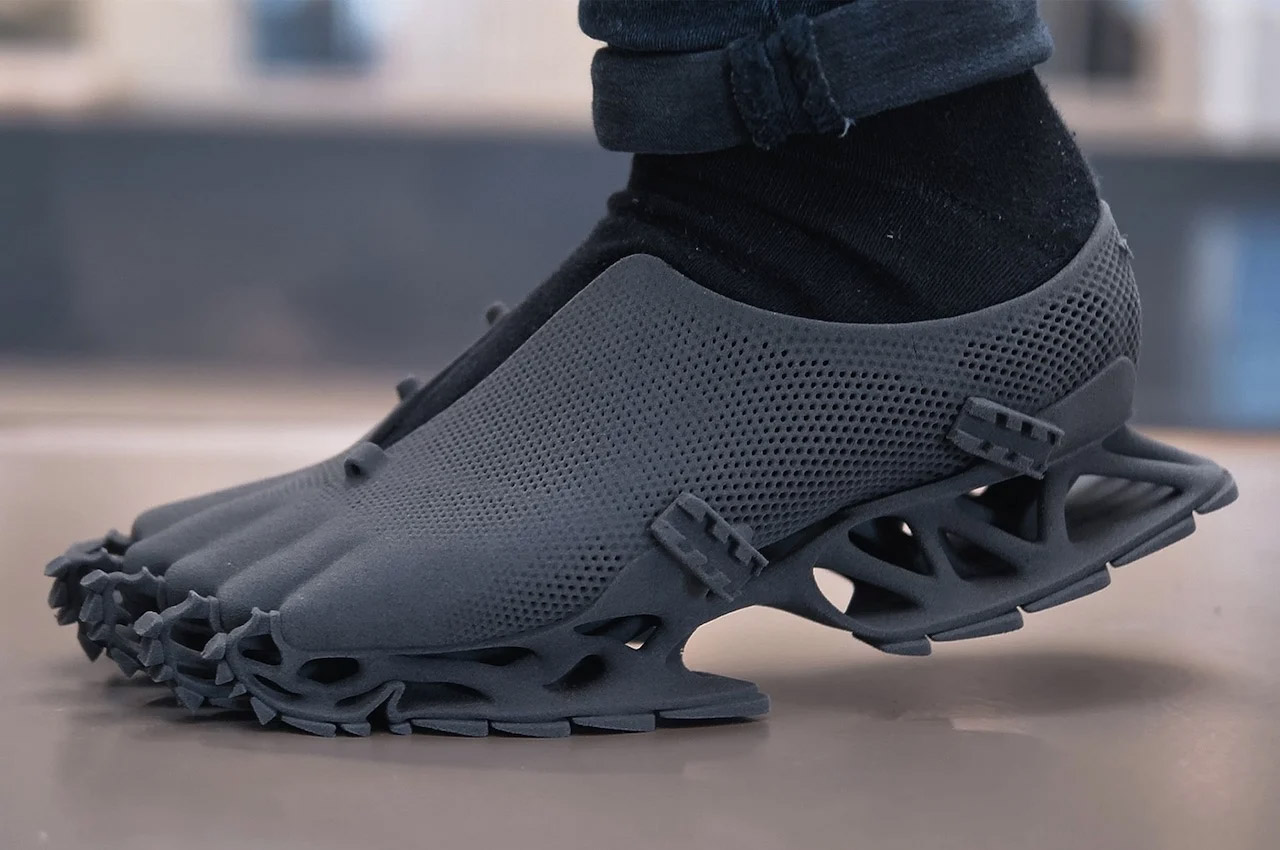
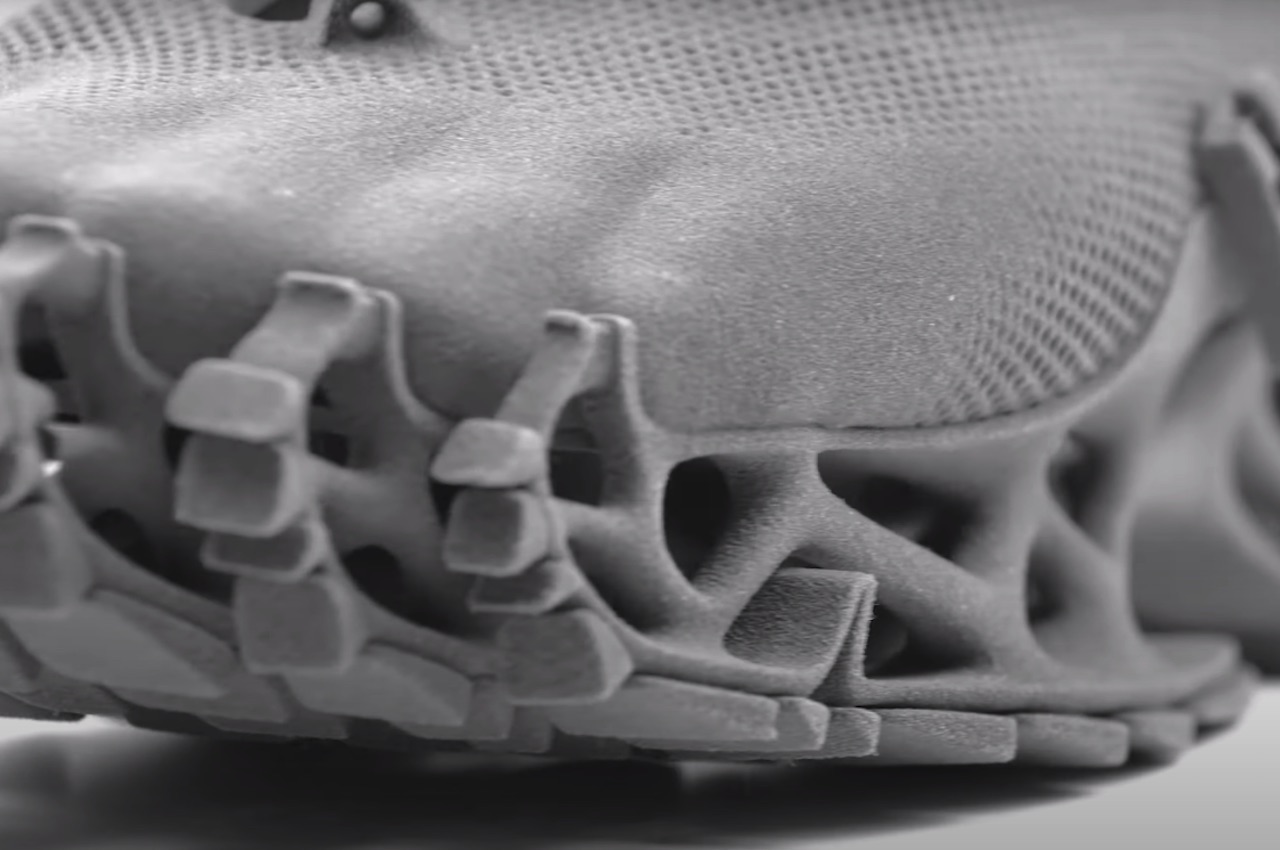
The Cryptide Sneaker was designed by Stephan Henrich for Sintratec. The German architect and designer came up with a pair of full 3D shoes meant to be laser sintered with a flexible TPE material. Using a Sintratec S2 System 3D printer, the shoes were formed and printed.
Why is it noteworthy?
The Cryptide features a sole with an open design. The designer said it was made possible by SLS production (Selective Laser Sintering) and a material called Sintratec TPE elastomer. Simply put, SLS is an additive manufacturing technique that takes advantage of a laser to sinter particles into a more solid 3D structure. Henrich and Sintratec worked together to bring the sneaker design into reality.
What we like
- The size and shape can adapt to the foot of the wearer
- They remind us of the Adidas Futurecraft 4D!
What we dislike
- They don’t rate high on aesthetics + style
- The shoes will leave freaky footprints
3. We|aver+ or Weaver+ Shoes
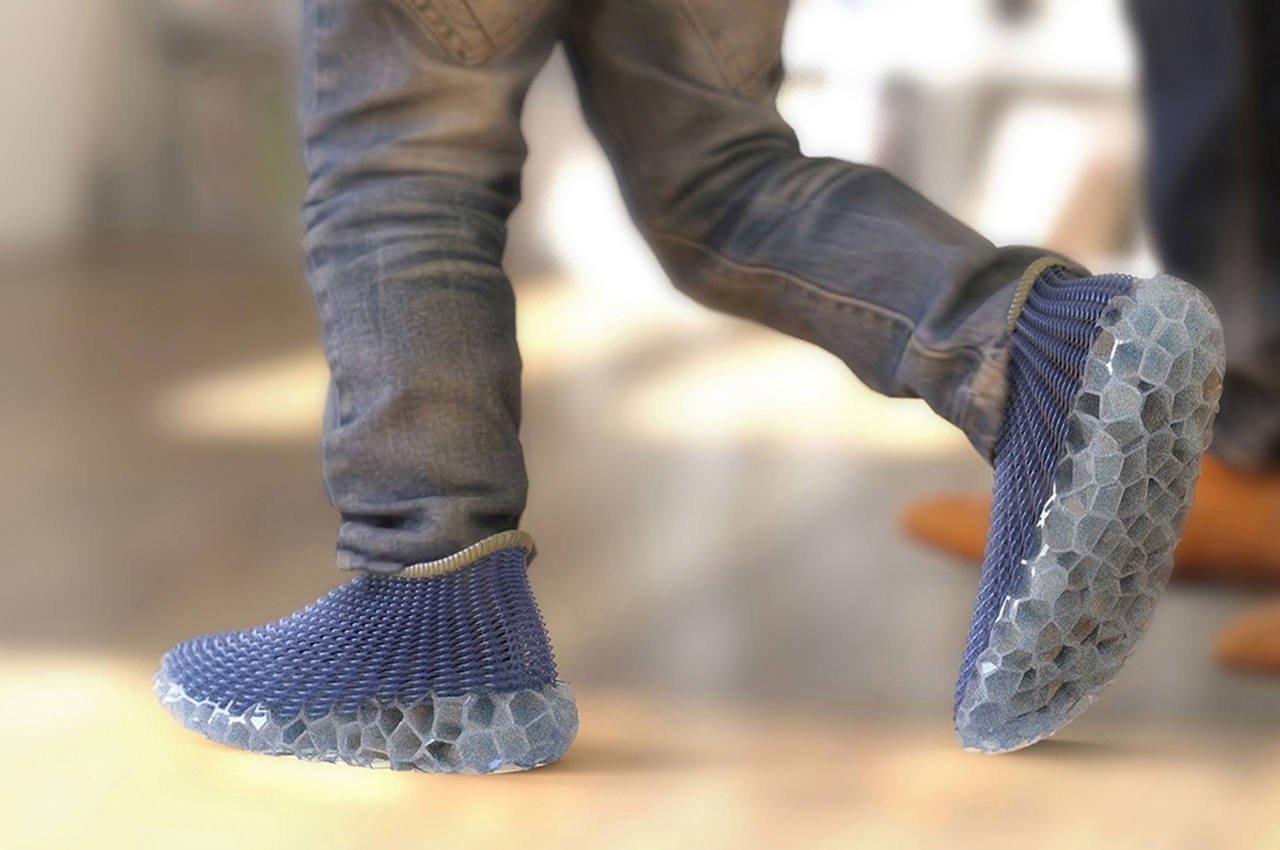
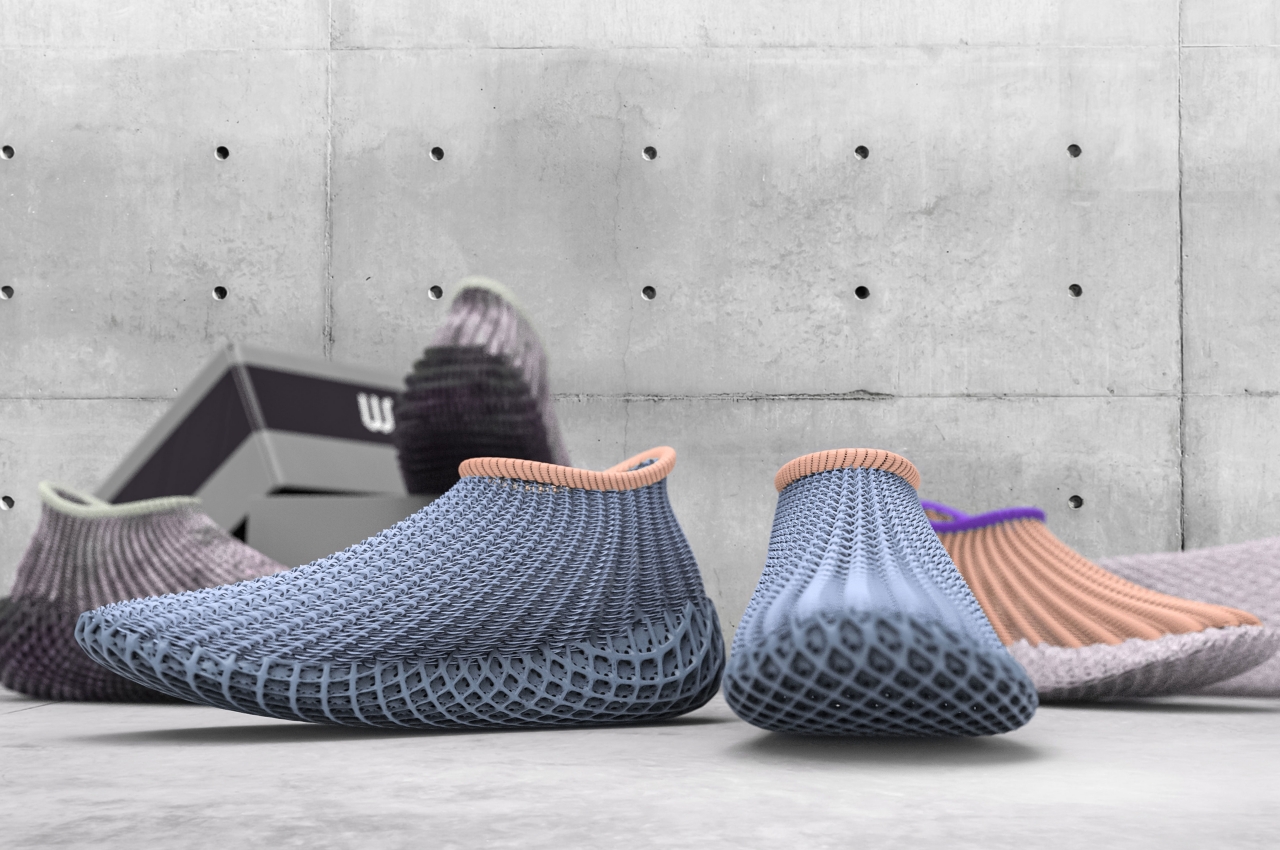
Young wearers will need footwear that goes beyond just fit and comfort, but one that can also help their feet grow in the proper way, avoiding potential health problems that could arise later in their lives. Such shoes are often labeled “therapeutic” and have expensive price tags, but We|aver+ wants to make this kind of shoe more accessible and easier to make, all thanks to 3D printing.
Why is it noteworthy?
We|aver+ or Weaver+, for example, 3D prints something that is akin to knitted fabric, except it uses elastic TPU as the material. The shoes that it prints out actually look more like chainmail rather than conventional fabric, and it’s not without reason. The hollow-loose knitting structure gives the shoes the flexibility necessary for supporting the growing feet of children.
What we like
- Shoes can be customized to fit the specific needs and requirements of wearers
What we dislike
- No complaints!
4. The Vine Collection
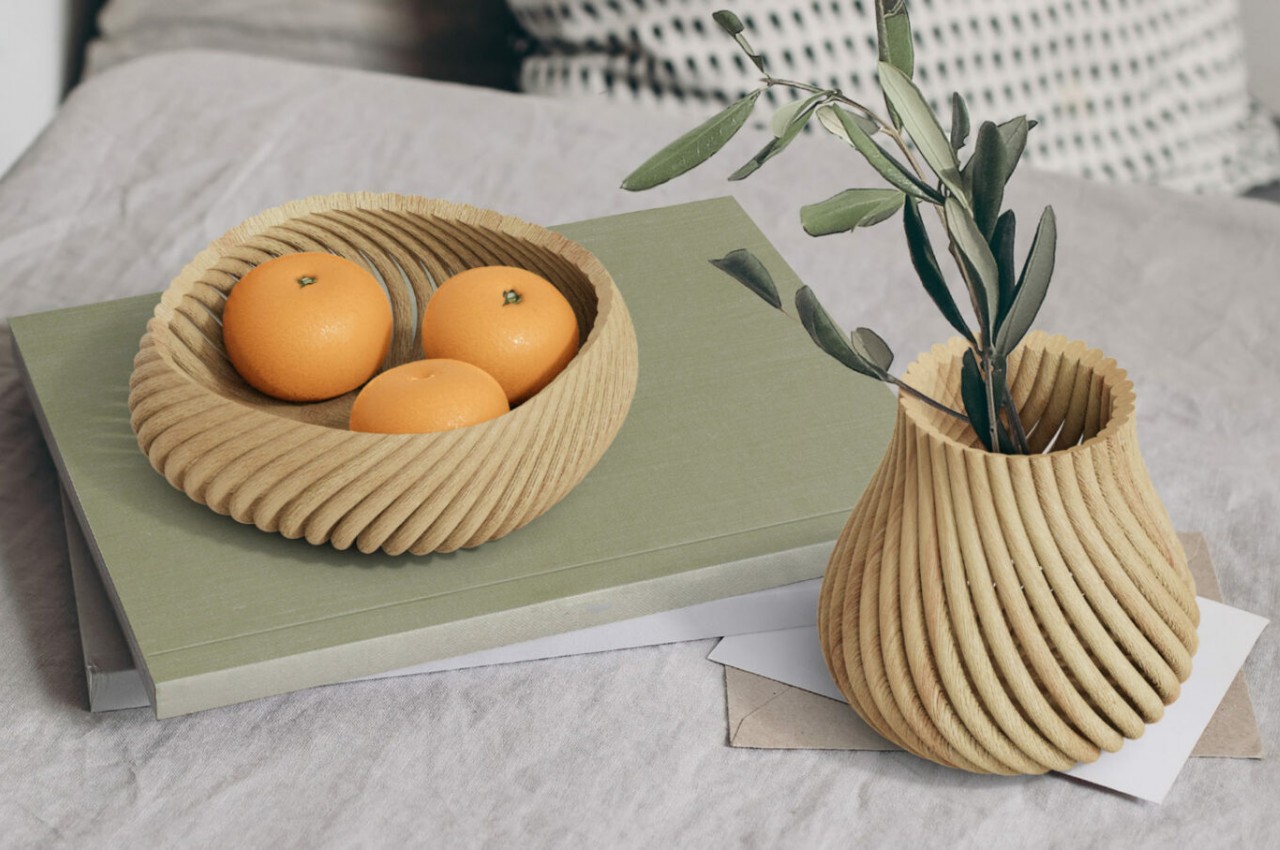

As it turns out, sawdust can actually be used as a material for creating other things, thanks to the almost magical technology of 3D printing. 3D printers can now use almost any kind of source material, from metal to chocolate to PET bottles, so it was only a matter of time before someone had the bright idea to use sawdust as well. And as a test of the usefulness of this proprietary process, a line of beautiful home accessories was made to showcase the flexibility and quality of 3D printed sawdust products.
Why is it noteworthy?
The Vine collection includes a vase-like vessel, a dish tray, a basket, and a bowl that look like a series of wooden rods twisted to create pleasing curves and shapes. No adhesives or extra connecting parts were used to finish their forms, ensuring that the products were sustainable and recyclable from start to finish.
What we like
- Serves as metaphors for the organic nature of trees that eventually end up as source materials for these products
What we dislike
- No complaints!
5. Otrivin Air Lab’s 3D printed products
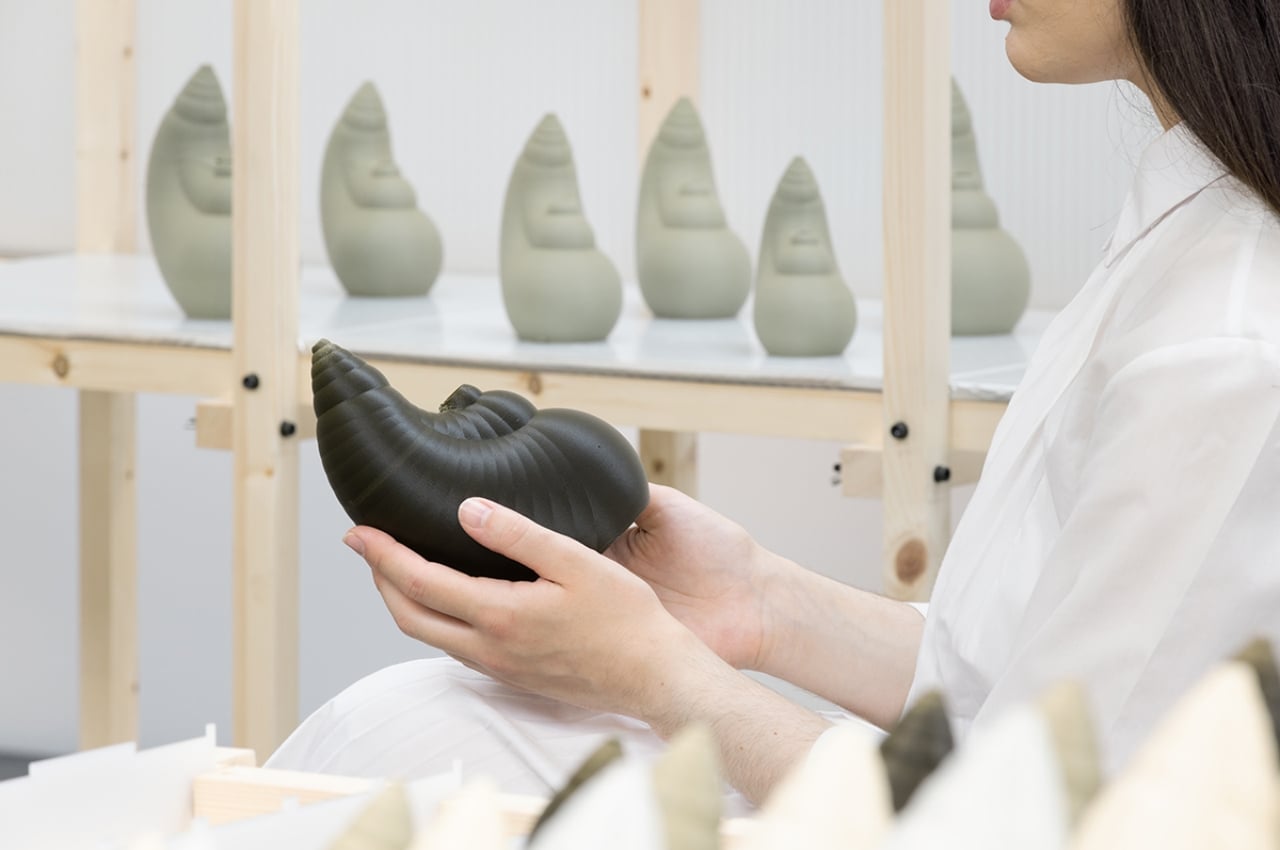
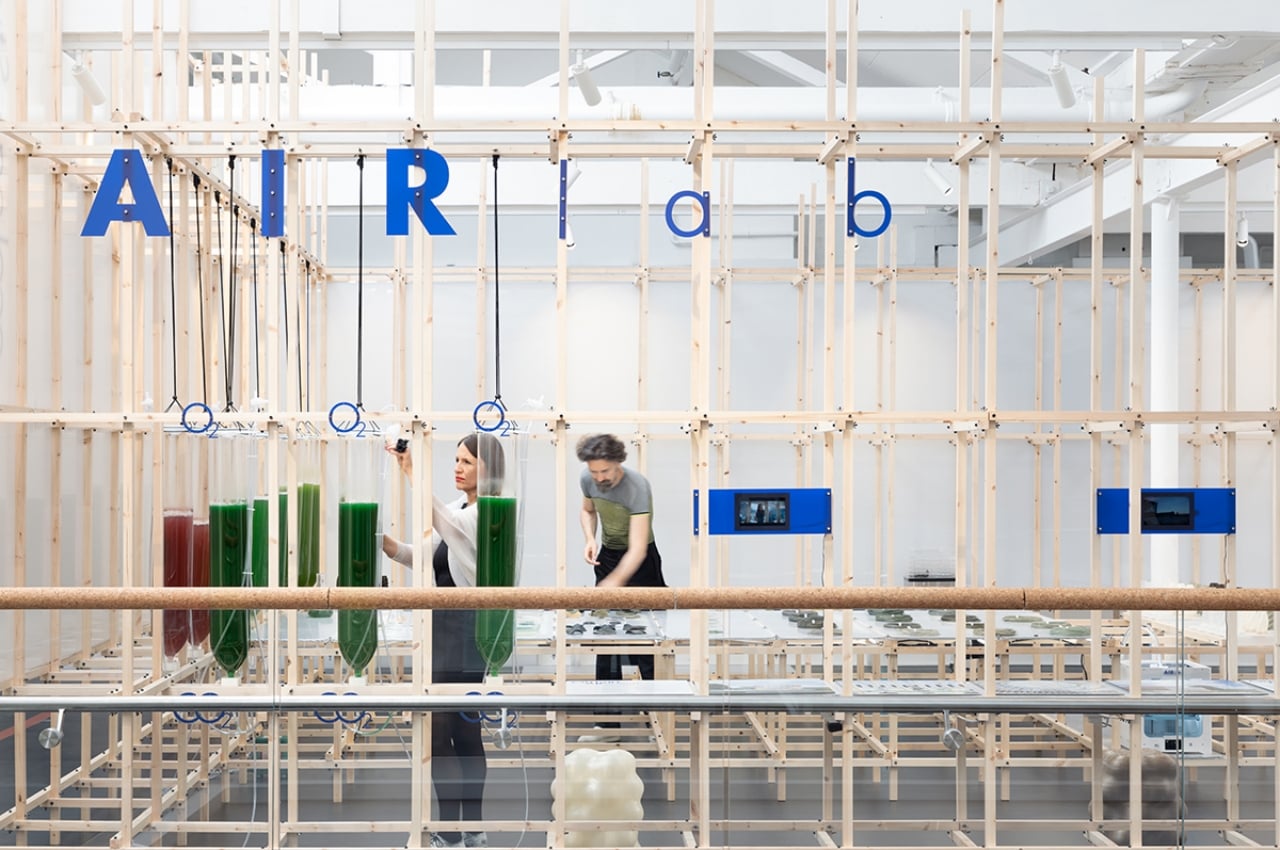
Mother Nature already has its own tiny air purifiers, and not only can we use them to clean the air, but we can also even harvest them to create products that won’t harm the planet in turn. That’s the proposition that the Otrivin Air Lab interactive exhibit in Londo is trying to present, and it’s roping in visitors not only to observe the process but to actively take part in it. The space is enclosed in a lightweight and reversible timber structure, and one of the walls holds twelve “photobioreactors.” These are tall glass vessels filled with ten liters of living photosynthetic microalgae that absorb CO2 and release oxygen while also producing biomass in the process. Each day, that wall can take in 240g of CO2 and spit out 180g of oxygen as well as 84g of biomass.
Why is it noteworthy?
Visitors to the lab can take part in the daily harvesting of that biomass product that is then turned into bioplastics, bio-rubbers, and 3D printing filaments. These raw materials can then be used to create biodegradable and sustainable products, like vases and even stools. Some might find it a bit unsettling, but the fact that you are sitting on what is practically CO2 and air pollution should feel empowering. We might not be able to completely eradicate unclean air, but we can at least turn them into something harmless and useful.
What we like
- The lab is intended to showcase the viability and sustainability of a circular economy
- Nasal healthcare company Otrivin, who collaborated on this exhibit, will be using this process to create its Fibonacci NetiPot nasal sprays
What we dislike
- No complaints!
6. The Polyformer


The Polyformer looks interesting from the get-go, and its name sounds like something taken out of fictional literature. Its translucent white appearance is thanks to the fact that it is made from recycled plastic PET bottles, giving it an appearance that also speaks to its purpose.
Why is it noteworthy?
In a nutshell, the machine slices up PET bottles and melts them to turn them into filaments only 1.75 mm in diameter. These recycled plastic threads can then be used in normal 3D printers to create more things, probably with the same distinctive translucent appearance as the Polyformer.
What we like
- Offers an alternative to the traditional way PET bottles are recycled
- The designer has made available all the information needed to recreate it yourself
What we dislike
- No complaints!
7. Wabo
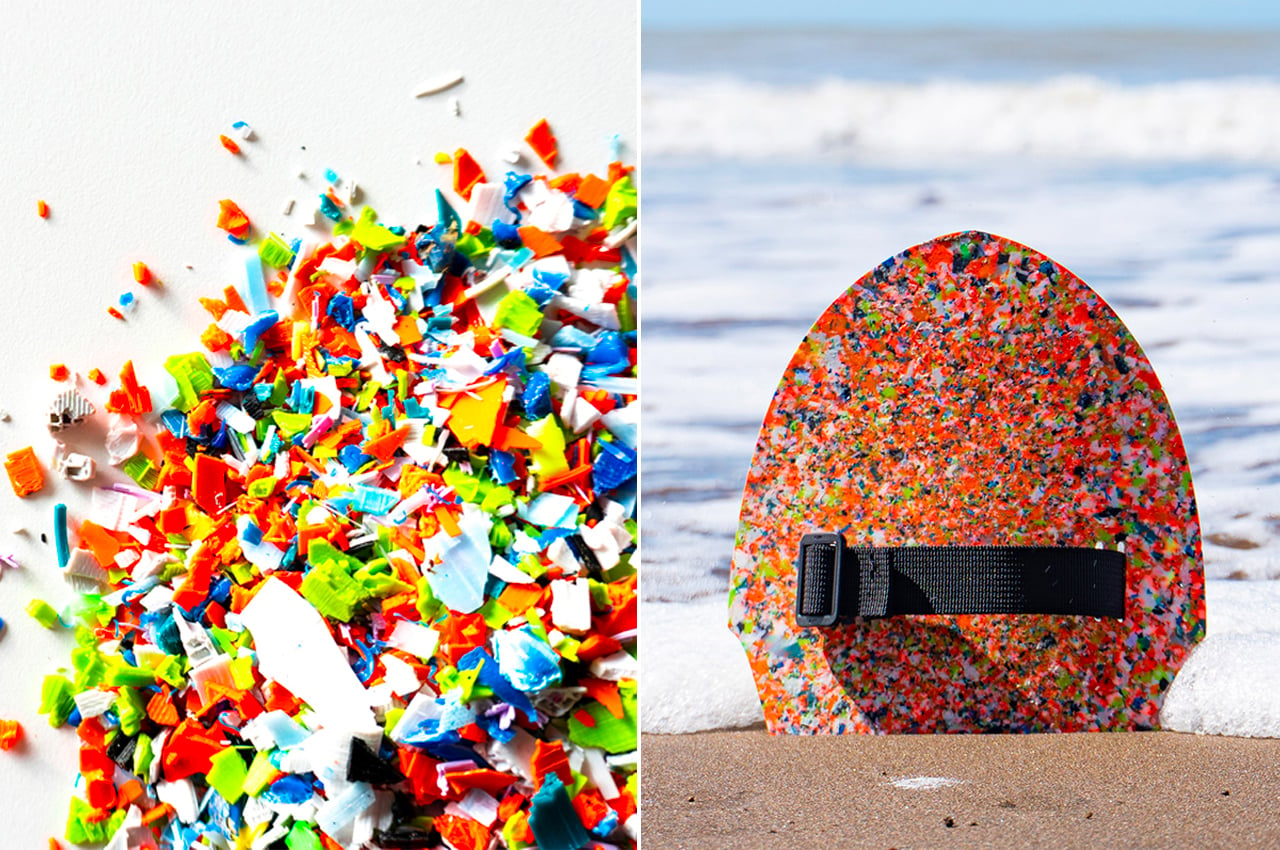
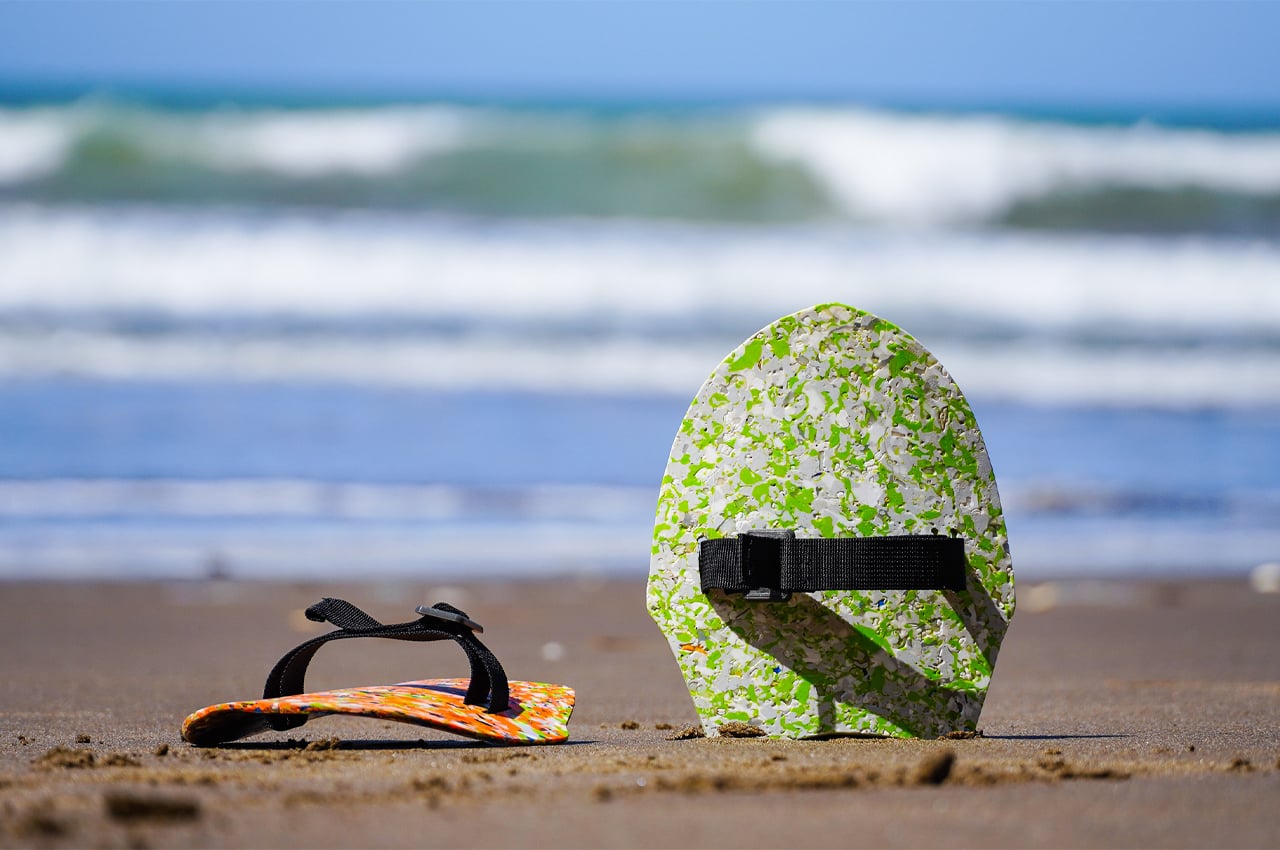
Wabo is a collection of hand boards that are created from plastic waste produced from 3D-printed prototyping. Eight million pieces of plastic make their way into the ocean on a daily basis. That’s a lot of plastic. While some brands commit themselves to gimmicky sustainable practices that have more to do with marketing than carbon-neutral manufacturing, other brands learn how to make something out of the plastic waste they produce.
Why is it noteworthy?
The multidisciplinary design studio Uido Design is a studio known for its catalog of 3D printable product designs and its team is doing something about the waste they produce during the design process. Shredding the plastic waste produced from 3D printing into bits and pieces, Uido Design uses the waste to create hand boards for users to ride the ocean waves.
What we like
- The hand boards are handcrafted
What we dislike
- Not a necessary product, but still fun!
8. Resting Reefs
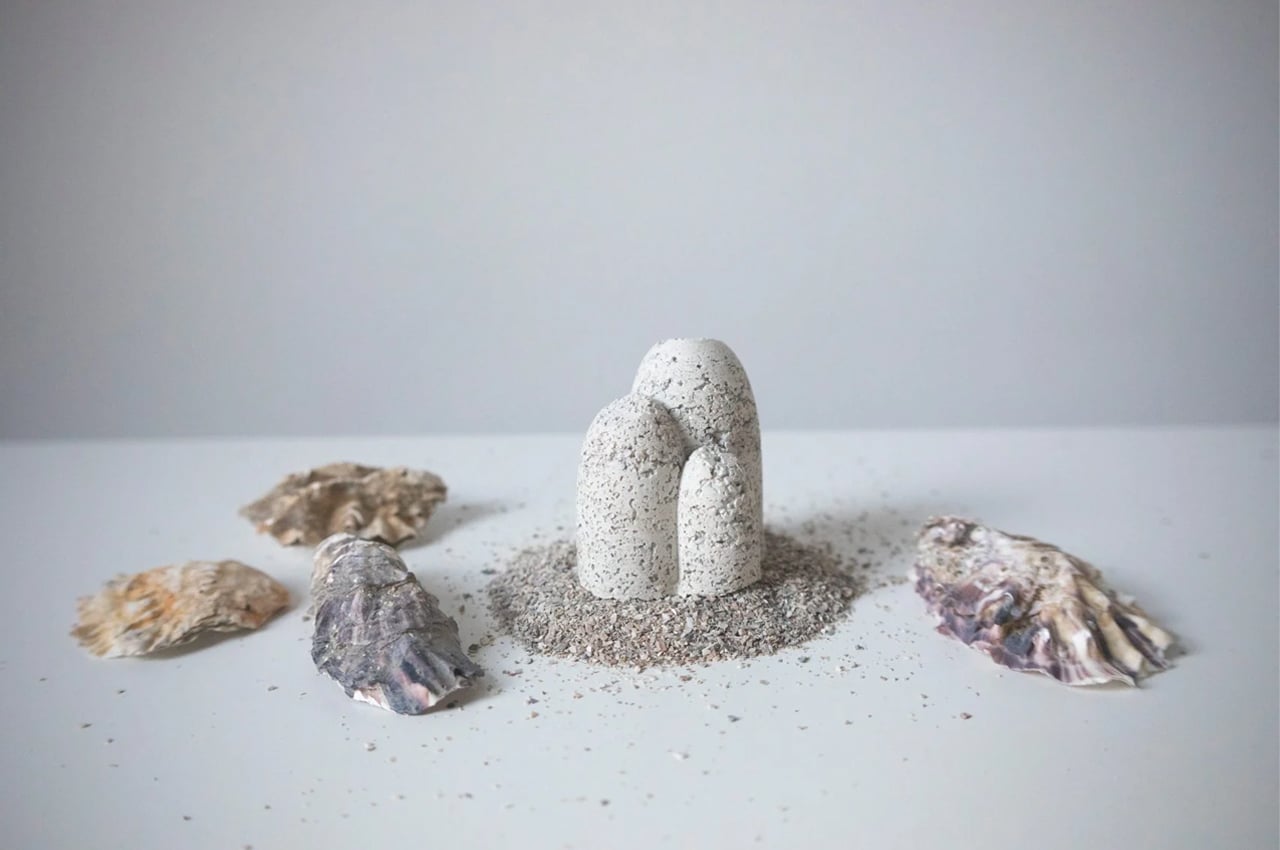
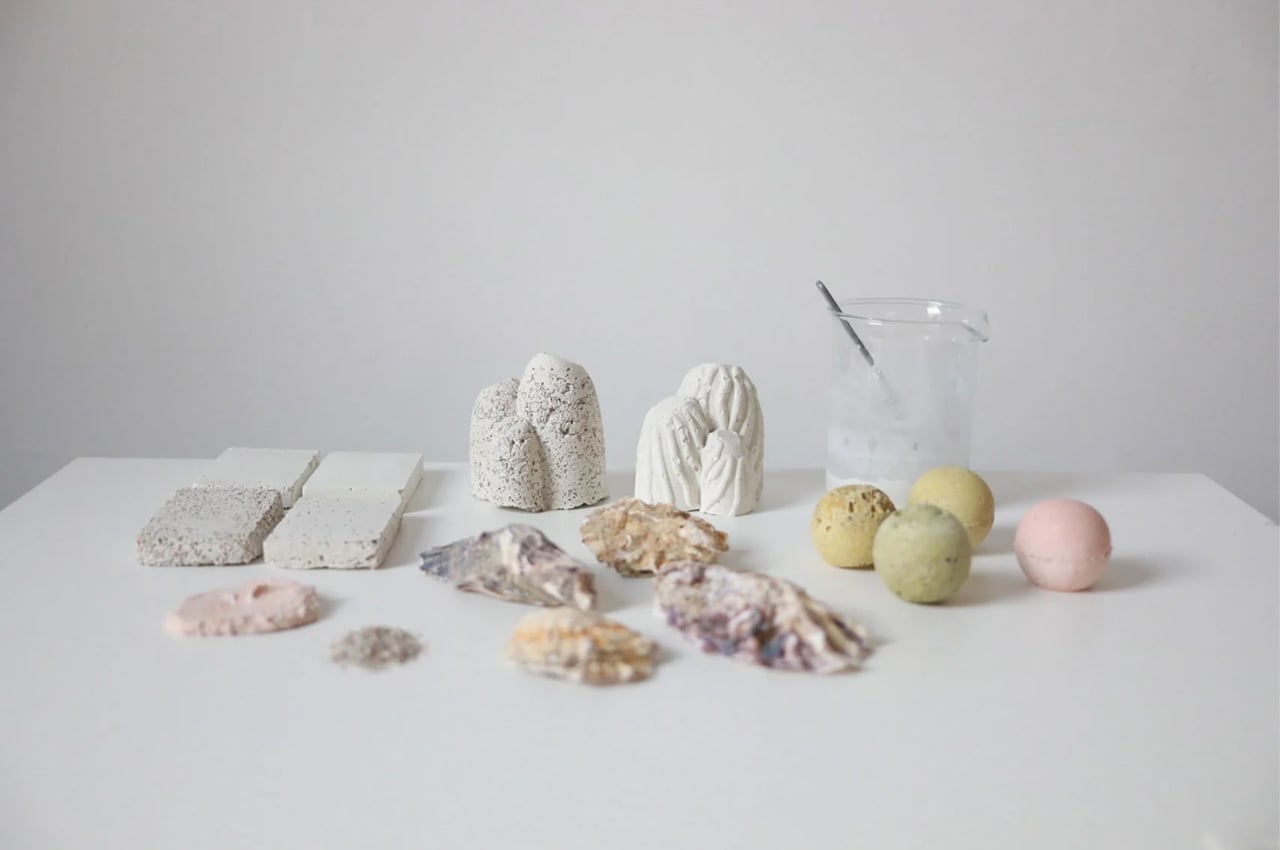
Resting Reefs is a system of artificial reefs that are 3D-printed from the cremated ashes of passed-over loved ones.
Why is it noteworthy?
Spreading the ashes of relatives who’ve passed over across the ocean is a beautiful way to memorialize loved ones. While the symbolism behind it is the point of tossing your loved ones’ ashes into the wind, Royal College of Art graduates Louise Lenborg Skajem and Aura Elena Murillo Pérez developed a means to still memorialize our passed-over loved ones while regenerating endangered ecosystems in the process. Resting Reef, a line of artificial reefs made from cremated ashes using 3D technologies, marks the culmination of Lenborg Skajem’s and Murillo Pérez’s studies at RCA.
What we like
- Allows surviving family members to visit their loved ones’ eternal resting places
- The 3D-printed mounds offer ideal growing conditions for oysters
What we dislike
- No complaints!
9. The Throne
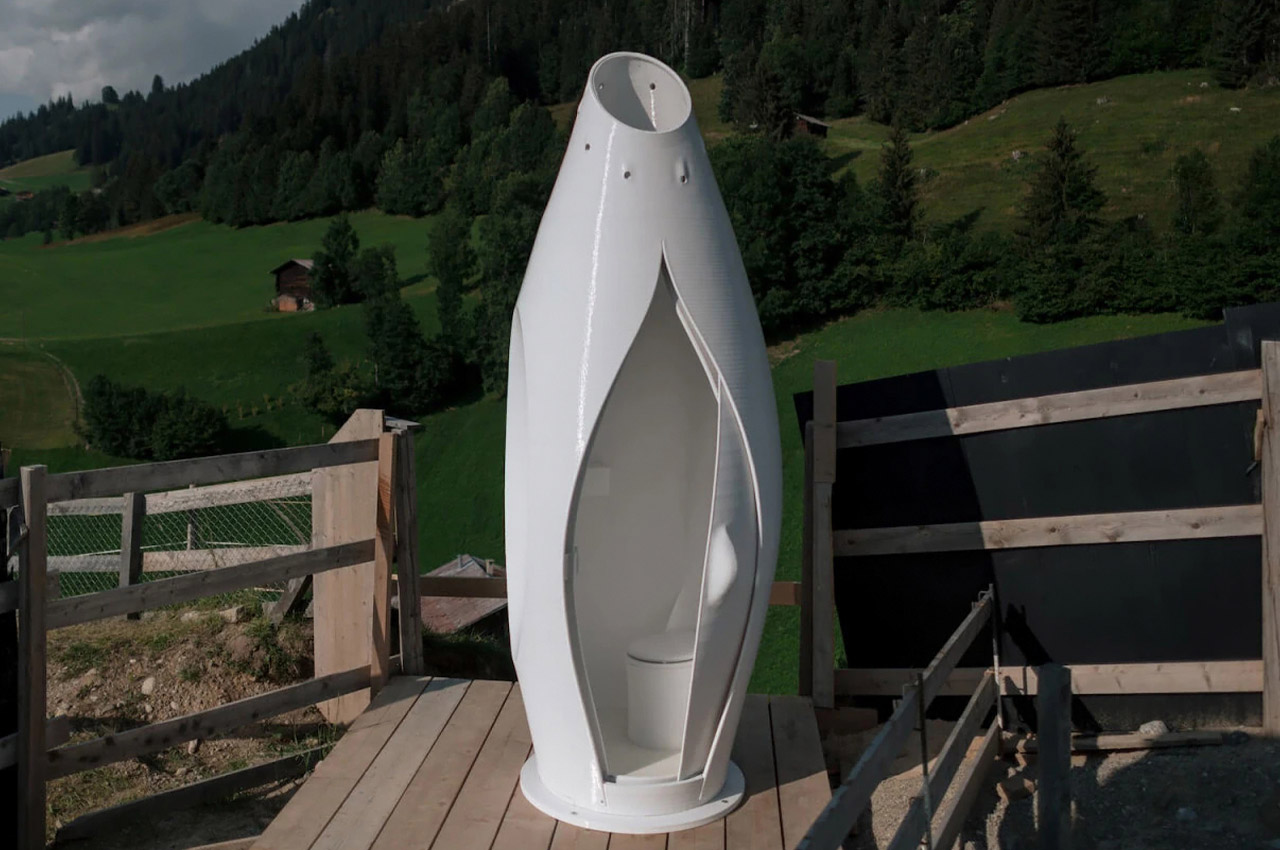
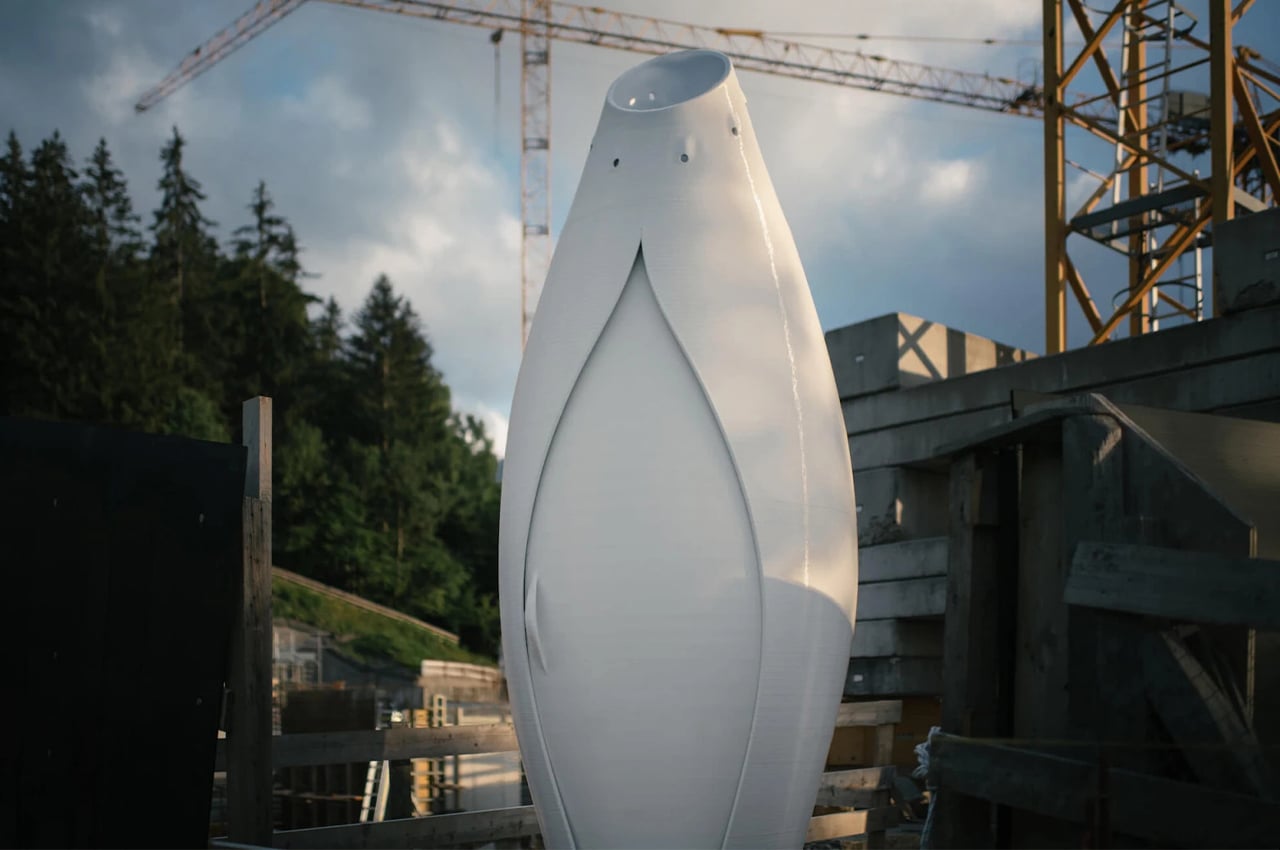
This sustainable toilet is designed to compost solid waste while also tackling the sanitation crisis – using design and technology to do good sh*t! It is a solution that eradicates plastic waste and turns it into a construction material that reduces the load on landfills.
Why is it noteworthy?
Created by Spanish design studio Nagami and To: it has been dubbed The Throne and it comprises three parts – a teardrop-shaped body, a dramatic, double-curved sliding door, and a bucket for solid waste. All the parts were printed within three days, including the base and some smaller accessories that were either injection-molded or ordered. It also includes an off-the-shelf separation toilet seat to separate urine from solids for composting.
What we like
- Sustainable design that combats the sanitation crises
- The teams used discarded plastic medical equipment from European hospitals for the prototype
What we dislike
- No complaints!
10. Cullan’s 3D-printed shoes
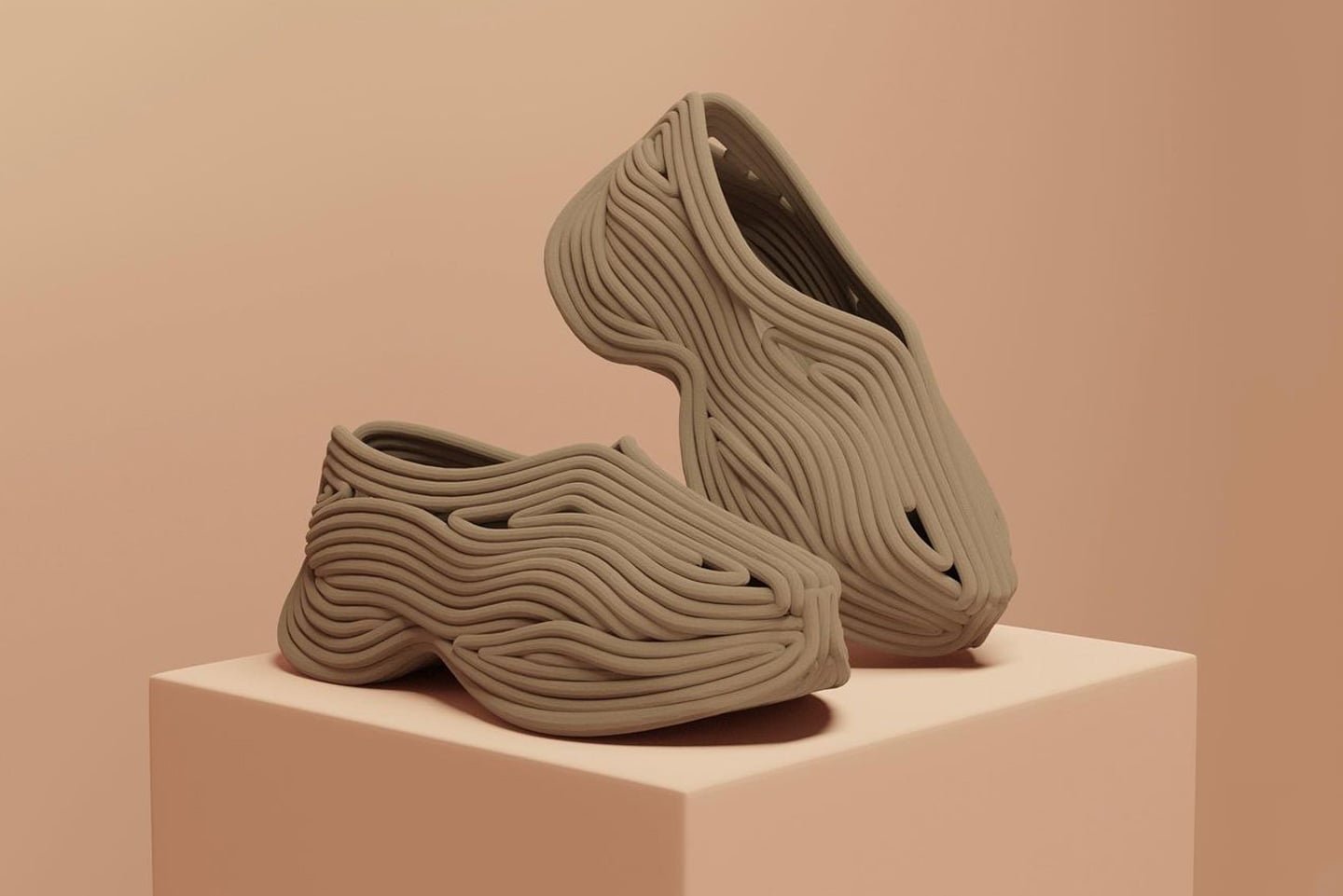
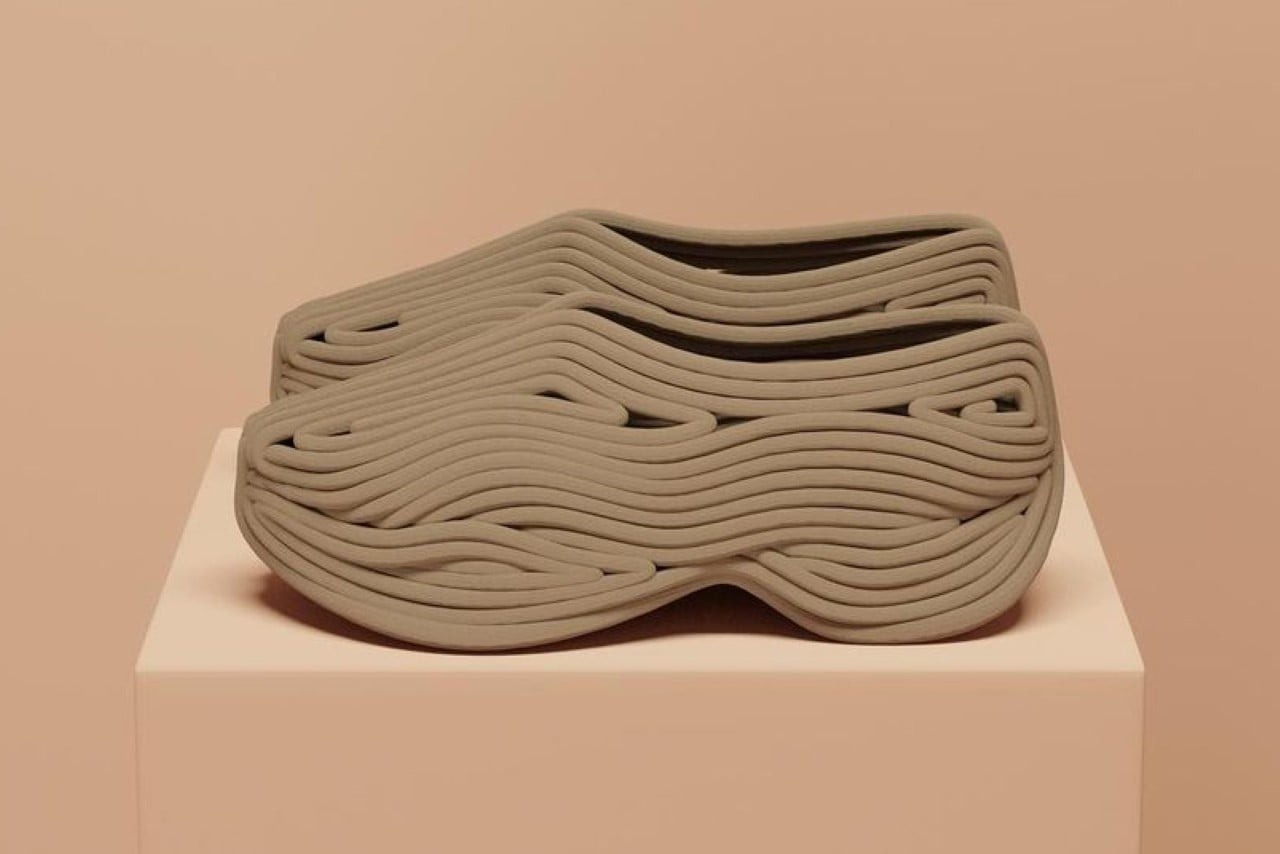
Designed in the metaverse by Cullan Kerner, the shoes embody an aesthetic that’s best described as ‘oddly refreshing,’ and the reason is because it doesn’t stick to the constraints of regular shoe design intended for mass production. The process with shoe design is standardized to a great degree – you’ve got pre-set sizes, materials that are readily available, dies for cutting/molding these materials, and processes like stitching or gluing that bring them together
Why is it noteworthy?
Cullan’s design process, however, is completely different. For starters, the shoes were made entirely in Gravity Sketch, a free VR software that allows you to design directly in a 3D space. Cullan designed the shoes almost like a sculptor makes an art piece, creating in 3D space. The shoes are made for 3D printing – a process that still hasn’t been mass-accepted by the shoe industry. The idea is simple – Cullan’s model gets imported into a 3D printing software, and the printer meticulously builds the design layer by layer using a single flexible elastomeric material.
What we like
- Each shoe can be designed to fit you perfectly, and they’re all made to order
- Available as NFTs
What we dislike
- They’re not in production!
Srishti Mitra
If you liked the article, do not forget to share it with your friends. Follow us on Google News too, click on the star and choose us from your favorites.
For forums sites go to Forum.BuradaBiliyorum.Com
If you want to read more like this article, you can visit our Technology category.
